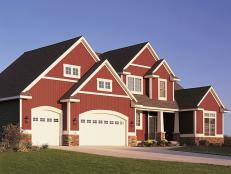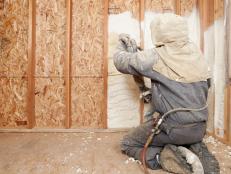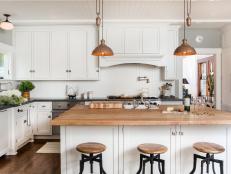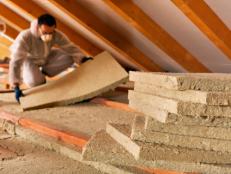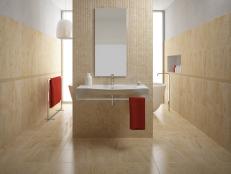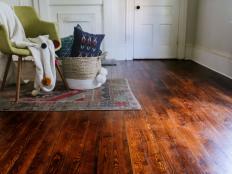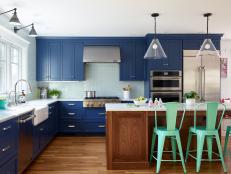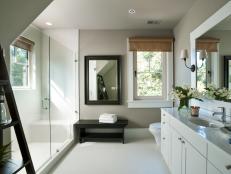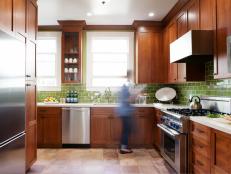Replace Aluminum Siding With Eco-Friendly Wood Siding
Jeff Wilson is giving his 70-year-old Cape Cod home the ultimate green treatment: a Deep Energy Retrofit (DER) that involves everything from beefing up insulation to upgrading systems and installing solar panels. Step by step, he's updating an antiquated house to today's highest green construction standards.
After building a highly insulated curtain wall to protect the home from energy loss, Jeff is ready to replace the 50-year-old aluminum siding that was slapped on to the home's original redwood shell with an eco-friendly option.
Stripping the Old
When the Wilson family moved into the home 10 years ago, the "Midwest white" aluminum siding had powdered and grown mildew. Jeff stripped off some pieces to see what was underneath and found redwood, some of it in fine condition. But because of prior drainage issues, most of the original surface was rotted.
"The house was built in the 1940s, so we can assume that white paint was most likely lead-based," Jeff points out.
The aluminum siding was stripped and three loads of it were trucked to a nearby recycling facility, where Jeff earned a couple hundred dollars back for the materials.
Next, Jeff performed air-sealing techniques on the entire building to insulate the home, applying spray foam, studs, sheathing and house wrap. With that, the home was ready for fresh siding.
Selecting the New
Jeff considered his options: vinyl, metal, aluminum, steel, wood, composites. He looked at Hardie board, which is a heavy-duty fiber cement board siding that is highly sustainable and long-lasting. The problem: It's heavy, breaks easily and is only available in 12-foot links, which would mean more seaming for Jeff, who planned to install the siding himself.
"If I installed fiber cement board I'd have to wear a mask," he adds. "There is a lot of silica in the product because it's a concrete product, so when you cut it, (particles fly). Breathing that in is horrible for you."
Jeff researched the market and found a sustainably harvested wood product called LP SmartSide. The product is manufactured like oriented strand board (OSB), by using safe bonding products that are free of formaldehyde, a known carcinogen. It is treated with zinc borate, an environmentally sound salt product that keeps out bugs and rot.
"We knew we'd have to live with our choice for a long time, and we were trying to make a big, aesthetic change to the house to make it more solid-looking and charming — like a Cape Cod cottage," Jeff says.
Because the SmartSide is available in 16-foot lengths, a single lap board would reach the length of the 16-foot garage/addition, an easier install for Jeff than shorter, 12-foot pieces. Jeff used special clamps called Gecko Gauges to secure each lap board in place.
His wife, Sherri Wilson, was the official house painter. As Jeff raised lap board, she worked behind him, coating the SmartSide with a layer of Sherwin-Williams' Duration — expensive at $57 per gallon, but worth the investment since it's a one-coat formula designed to last, Jeff says. "Usually, the cost of paint is only 10 percent of the paint job, so it doesn't make much sense to scrimp there," he says.
Smart Siding Strategies
Before you strip your house and start anew, consider Jeff's pointers for selecting a product that will suit your environmental and aesthetic goals.
Survey the market. "It pays to do a little research before settling on the product close at hand," Jeff says, recommending SmartSide and fiber-cement products rather than vinyl or wood. "With vinyl, you'll be stuck with the same color forever, and with real wood, you'll always be maintaining it."
Think long-term. Check warranties on siding products and beware of materials that wear out relatively quickly. For instance, while vinyl is cost-effective and common, its finish tends to powder after 10 to 12 years, Jeff says. "You can paint over it, but it really becomes a mess," he says, adding that the "chemically intensive" process of producing vinyl siding was not appropriate for his DER project.
Consider installation demands. If you'll be installing the siding yourself, think about manageability before you buy a product. The SmartSide Jeff chose is a lighter weight than typical wood siding or cement fiber board. "That makes it possible for me to install it relatively quickly and handle big pieces by myself," he says, noting that he carried 16-foot board up a ladder 12 to 18 feet without too much trouble.






